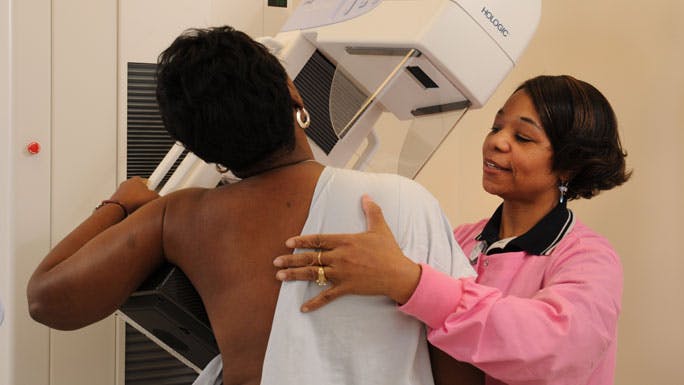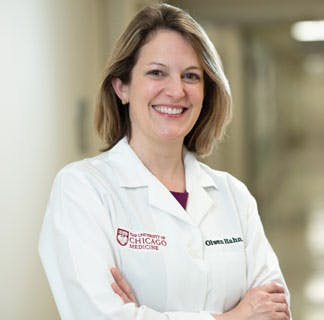Federal task force adds twist to guidelines for breast cancer detection

Last October, the American Cancer Society (ACS) issued new guidelines recommending women with an average risk of breast cancer get an annual mammogram starting not at age 40 but at 45. This shifted their guidelines to a slightly less aggressive stance, closer to the recommendations published by the United States Preventive Services Task Force (USPSTF) in 2009.
On Jan. 11, the USPSTF returned the favor, in part. In an article published in the Annals of Internal Medicine, they continue to recommend screening mammography every two years for women starting at age 50 and continuing to age 74, but concede that "the decision to start screening mammography in women prior to age 50 should be an individual one."
They emphasize that this is not a simple decision. Screening mammography, according to the USPSTF, is most beneficial for women aged 60 to 69-who have a much greater risk of breast cancer-and least beneficial for women aged 40 to 49. Screening 10,000 women aged 60 to 69 for ten years will result in 21 fewer breast cancer deaths. Screening 10,000 women aged 50 to 59 for ten years will result in 8 fewer cancer deaths. For women aged 40 to 49, that falls to 4 fewer cancer deaths. Most of the benefit in the 40 to 49 group would come from women age 45 to 49.
For women aged 40 to 49 with a first-degree relative (parent, child or sibling) with breast cancer, however, the potential benefit is greater than for a women at average risk. The USPSTF guidelines describe the net benefit for this group as "positive," but small.
The USPSTF also concluded that the current evidence for the benefits of adjunctive screening for breast cancer using newer methods-such as digital breast tomosynthesis, magnetic resonance imaging, or breast ultrasound in women with dense breasts-is "insufficient."
Responses to the new guidelines were mixed. Adam Cifu, MD, professor of medicine at the University of Chicago and deputy editor of the JAMA Clinical Guideline Synopsis series, was encouraged that the change would "subtly affect physician behavior" and could "stimulate patient-doctor communication" about screening.
Breast screening specialist David Schacht, MD, MPH, assistant professor of radiology, was disappointed by the short shrift given to the potential benefits of newer tools for early detection of small breast cancers. "There are some advantages offered by these technologies, especially for women at increased risk," he said. "Tomosynthesis has been shown to both find more cancer and decrease the call-back rate from screening and ultrasound can find more small invasive cancers," he said. MRI can improve the detection rate for women at high risk, those with a family history or a known genetic predisposition to breast cancer.
For a concise comparison of the various screening guidelines for early detection of breast cancer, see previous: Screening mammograms: Guide to the Guidelines.

Breast Cancer Care
Our team represents expertise across the spectrum of breast cancer care: breast imaging, breast surgery, medical and radiation oncology, plastic and reconstructive surgery, lymphedema treatment, clinical genetics, pathology and nursing. Our comprehensive care approach optimizes chances of survival and quality of life.
Learn more about UChicago Medicine breast cancer care.
